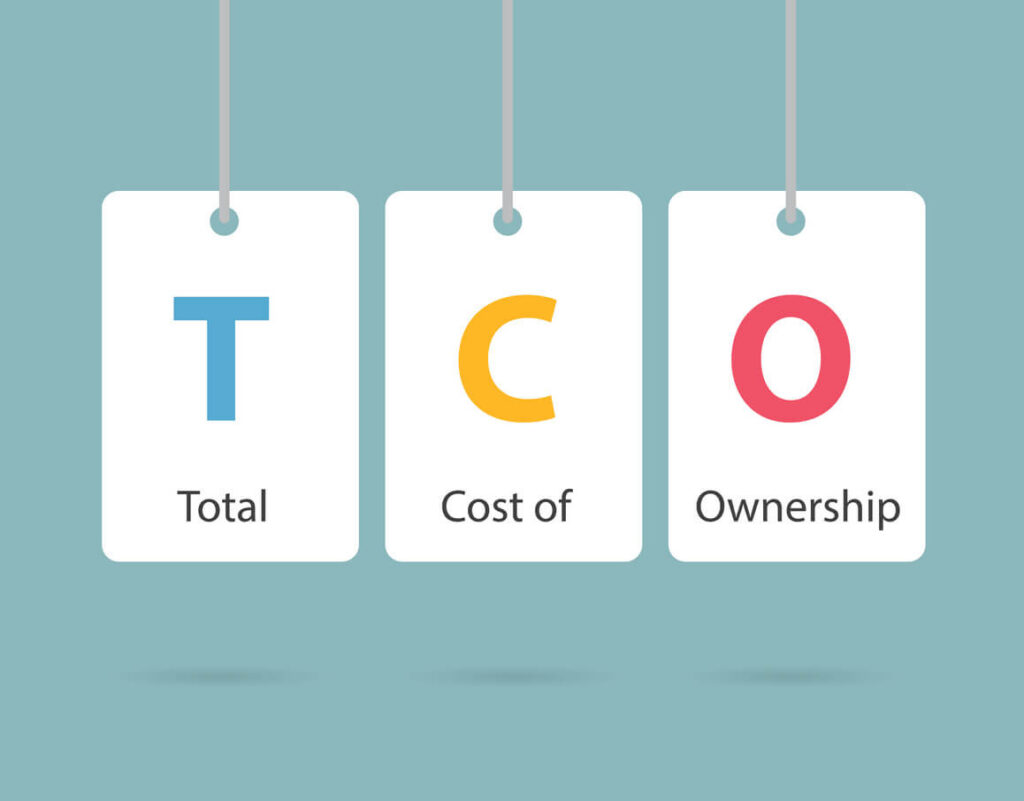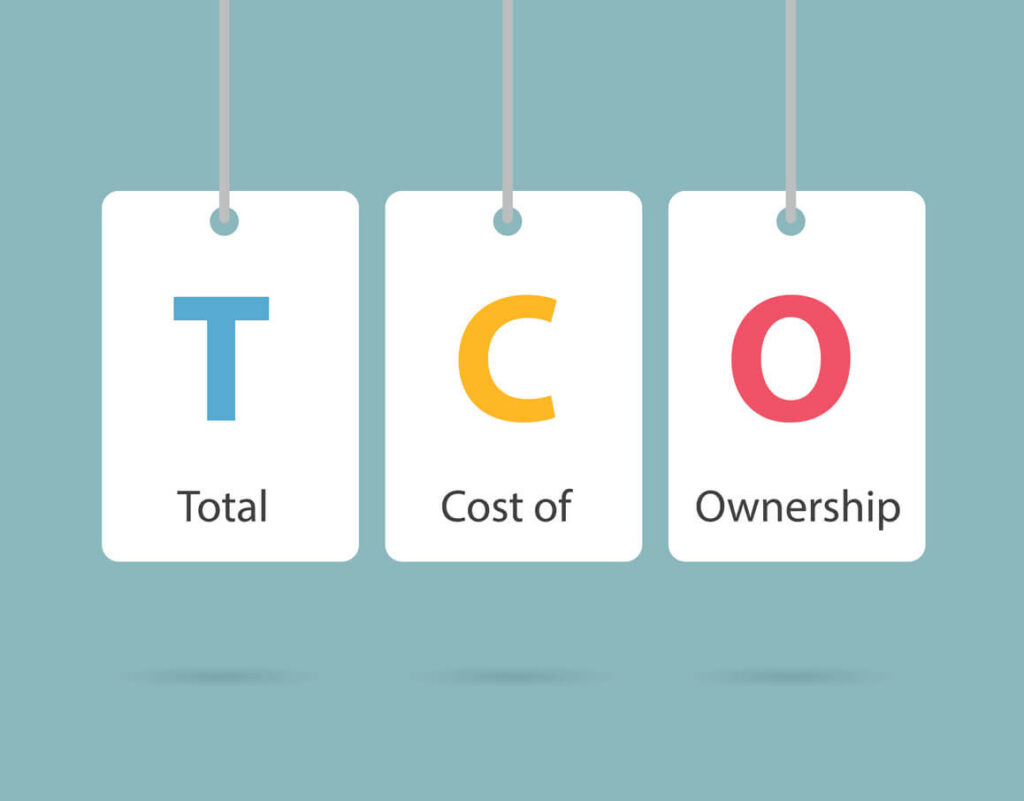
A total cost of ownership (TCO) analysis is a vital tool when implementing new technologies in your organization. When deciding between vendors, software, and other solutions, you should consider the initial purchase price and the long-term price or the total cost of ownership.
Today we’ll go over everything you need to know about a TCO analysis, including how to calculate TCO and use the results to make smarter business decisions.
What Is TCO Analysis?
A total cost of ownership analysis estimates an asset’s direct and indirect costs, product or service. This estimate encompasses all the phases of ownership, including acquisition, ownership, change management and employee training.
While a purchase price describes the short-term costs of a product or system, a TCO analysis assesses the long-term costs. Simply put, a TCO analysis adds up the purchase price and operation costs. Therefore, when it comes to adding new technology to your business operations, the option with the lower total cost of ownership will provide better value in the long run.
Why Is TCO Analysis Important?
Although finding out the total cost of a purchase is easy, there are usually hidden costs that are harder to figure out. With a TCO analysis, you can better understand the indirect expenses that add up throughout the lifecycle of new software or services, such as maintenance and licensing fees.
TCO analysis became a popular procedure in the mid-1980s when more organizations started to acquire supporting hardware and software for their information technology infrastructure. However, once the new technology was implemented, management would later discover that these acquisitions could cost up to eight times the purchase price — much more than they had planned for.
Today, a comprehensive TCO analysis is a common practice for many businesses, particularly when implementing new software or considering a technology migration. In addition, you can use a TCO analysis to get a more holistic view of your purchasing options, including any indirect expenses that will come up in the future. For example, a TCO analysis can help you decide if you should lease or buy new equipment based on your business goals.
In addition to informing IT acquisition decisions, a TCO analysis can help you understand other potential business deals or purchases in the long term, such as:
- Leasing a new office space
- Acquiring facilities in a new location
- Purchasing a new marketing tool
- Outsourcing parts of your operations to a third-party provider
Overall, a TCO analysis provides information about which option will lead to a better return on your investment and support the growth of your business. This calculation can even help you negotiate better rates with your suppliers.
How Is TCO Calculated?
To get the most realistic total cost of ownership, you need to identify all the variables associated with each option. For example, for IT, TCO analysis includes hardware and software acquisition, maintenance, support, communication, training, downtime costs, and other productivity losses.
Calculating the total cost of ownership can provide better economic predictability. Although there is no one-size-fits-all formula to determine the TCO, a simple calculation includes:
- Initial costs (I), or how much you will pay upfront
- Maintenance costs (M), or the costs to maintain the asset in the long term
- Remaining costs (R), or the asset’s price after devaluation
The simple formula would therefore be I + M – R = TCO.
When determining how to calculate the TCO for a purchasing decision, you should consider these three main components:
- Acquisition costs, such as property and equipment
- Operating costs, such as utilities and initial training
- Personnel costs, such as skilled management and ongoing maintenance
Acquisition Costs
These are the costs associated with implementing new software, migrating to a new system or partnering with a third-party provider. These include:
- Software, such as off-the-shelf software, cloud software or custom software
- Hardware, such as servers and storage equipment for backup and disaster recovery
- User licenses for named and simultaneous users
- Data migration, including any data format changes
- Implementation, including setting up, configuring and testing software in its new environment
- Training for all employees
- External system interface costs to integrate new software with existing systems
Operating Costs
Operating costs are incurred when new technology is in use and include:
- Maintenance and support to ensure you get all the necessary updates to keep your software secure and functional
- Patches, or the cost of applying security and bug-fix patches
- Disaster recovery, such as backups and hot failovers, to ensure uninterrupted operations
- New user licenses as your company grows
- Ongoing user support, such as a helpdesk, internal IT staff or a third-party managed services provider
- Data center costs, such as power, cooling, security, maintenance and property management
- Downtime costs, such as loss of productivity or business when the software is unavailable
- Security, such as network management and threat detection and response
Personnel Costs
Like operating costs, personnel costs are added throughout the technology’s lifecycle and include:
- Administrative staffing
- Support costs
- Ongoing employee training
- Troubleshooting and maintenance
- Specialized personnel for equipment maintenance
- Facilities housing the equipment and operators
- Additional training for software upgrades
Partner With Helixstorm For a Stress-Free TCO Analysis
New technology can be a powerful tool to help grow your business and optimize your workflow. However, adopting new technology can be a challenging journey if you want to find the most cost-effective option. Helixstorm can help take the burden off your hands with a TCO analysis included with our professional services.
At Helixstorm, our technology experts enable you to confidently grow your business in an increasingly complex marketplace. We offer a wide range of professional IT services, from the architecture and design of your IT infrastructure to ongoing network and server administration.
Our TCO analysis can help you choose the right software, technology, and other solutions to meet your organization’s unique needs and result in significant long-term cost savings.
To learn more about our professional IT services, contact us today.
